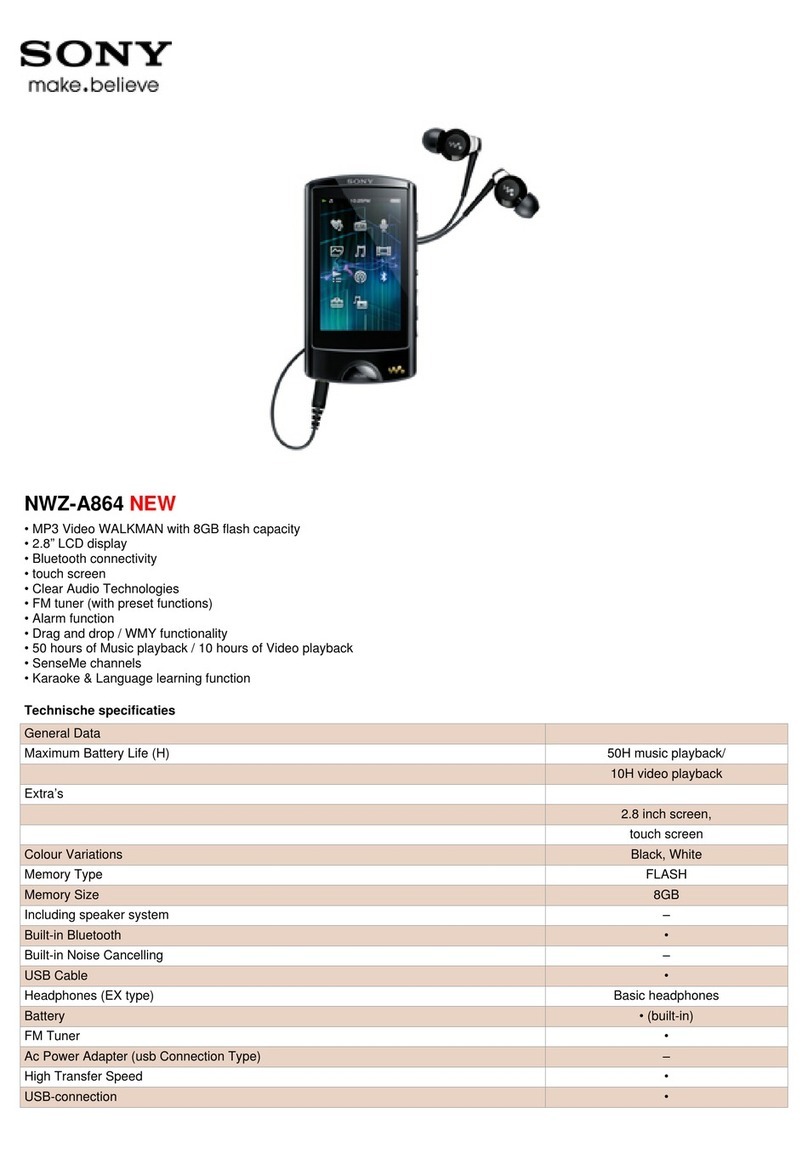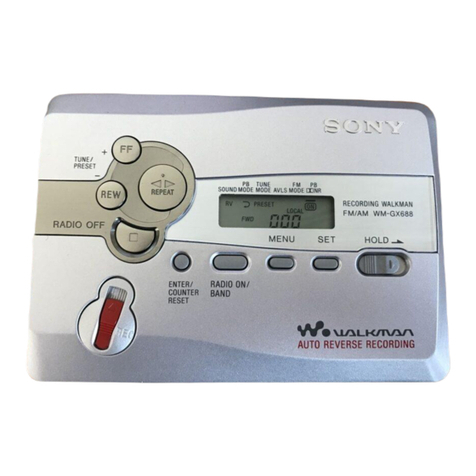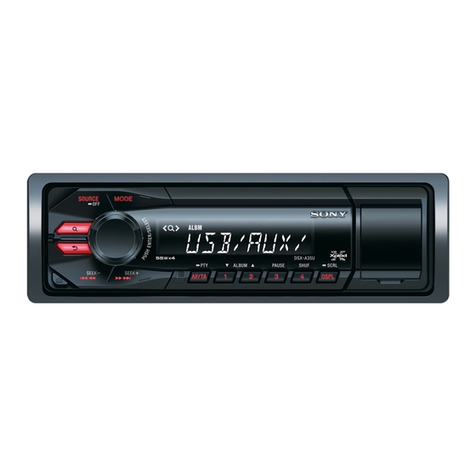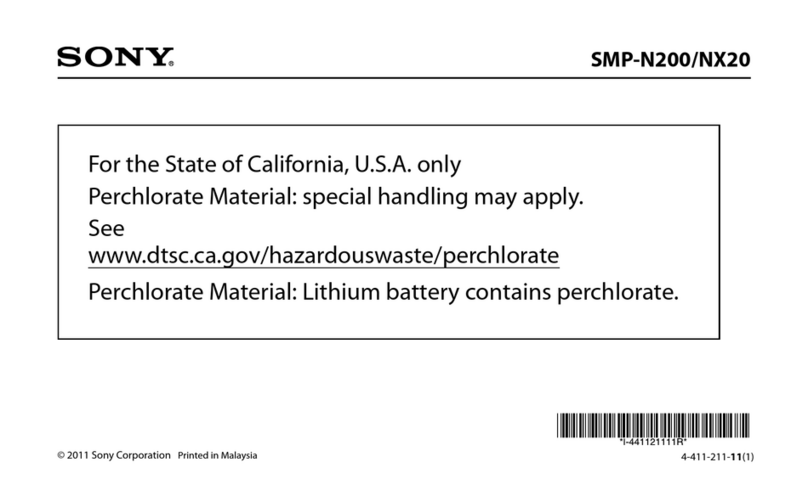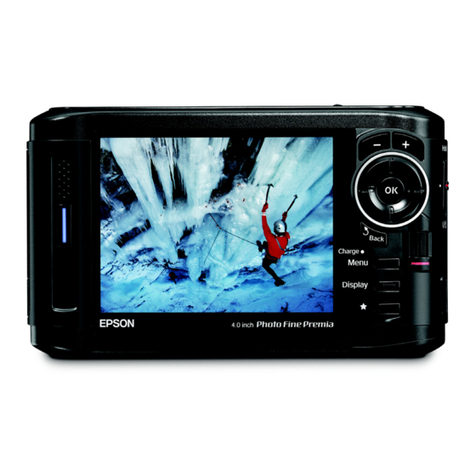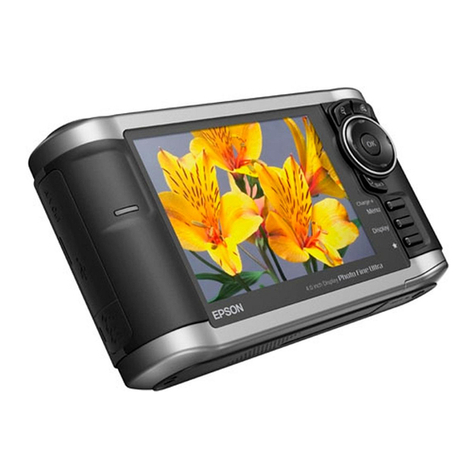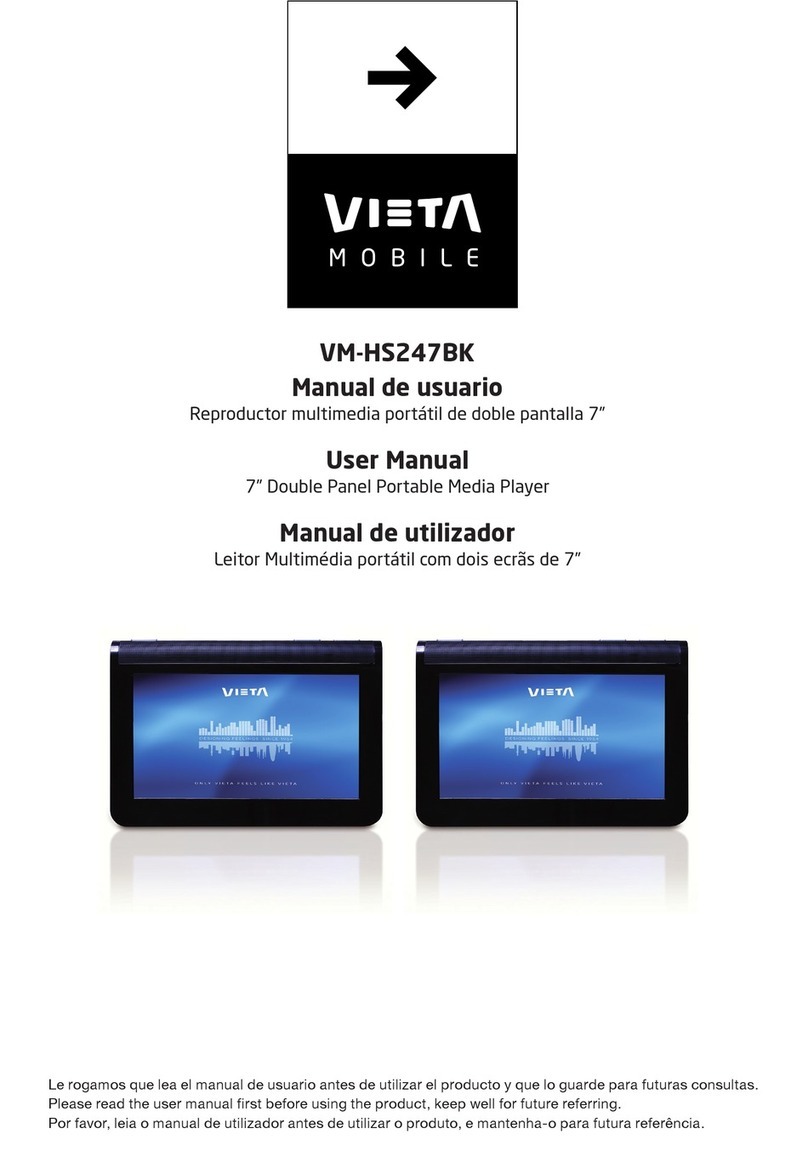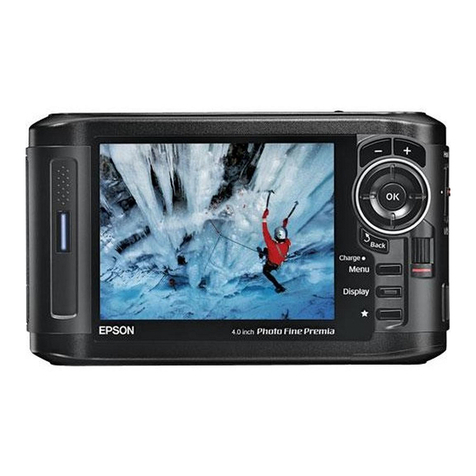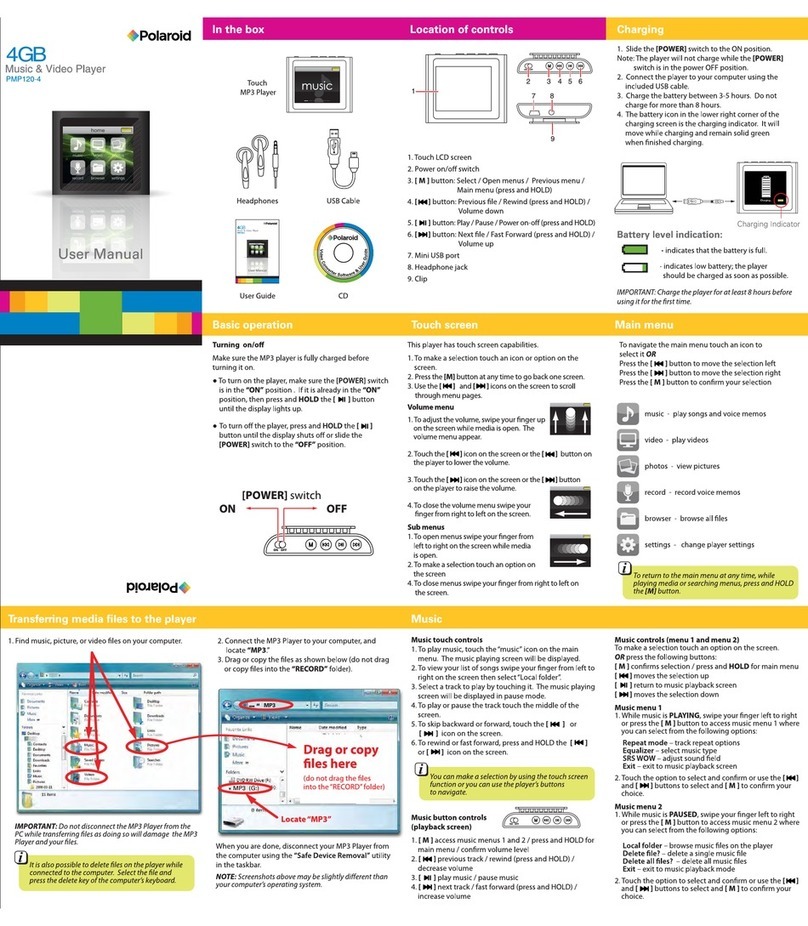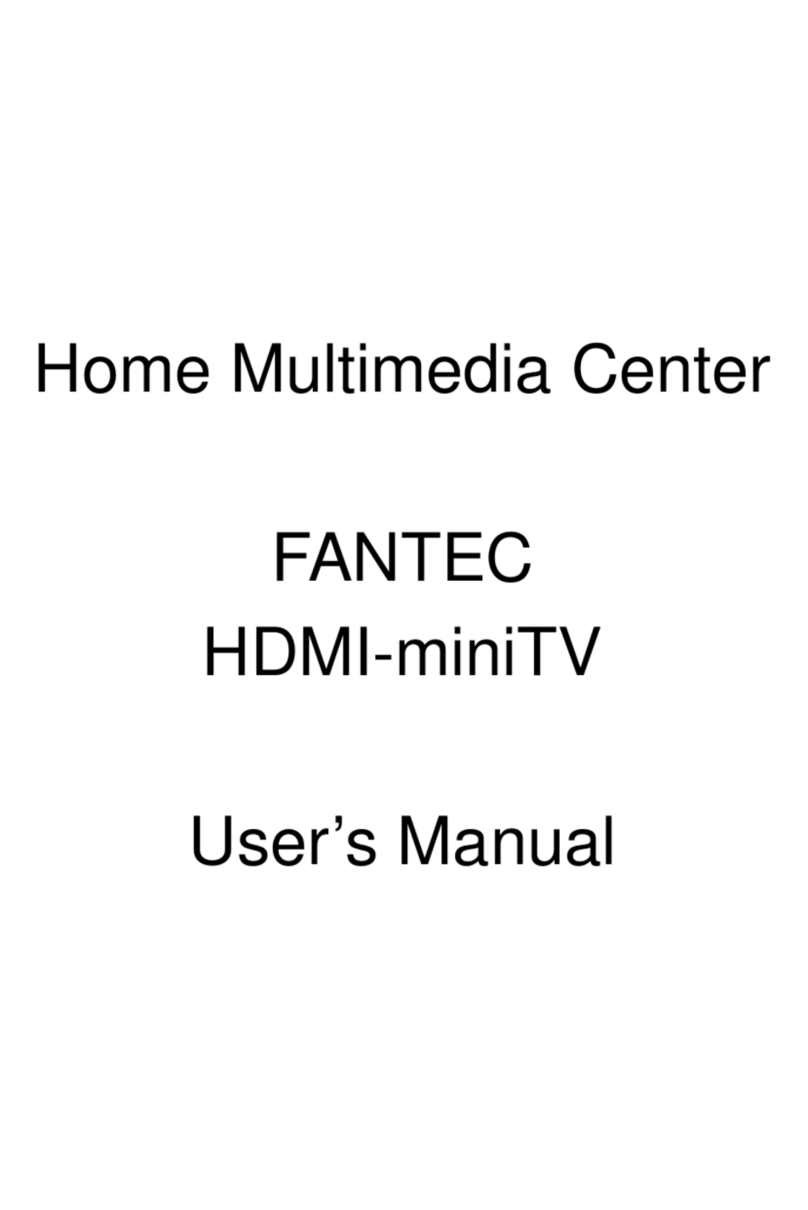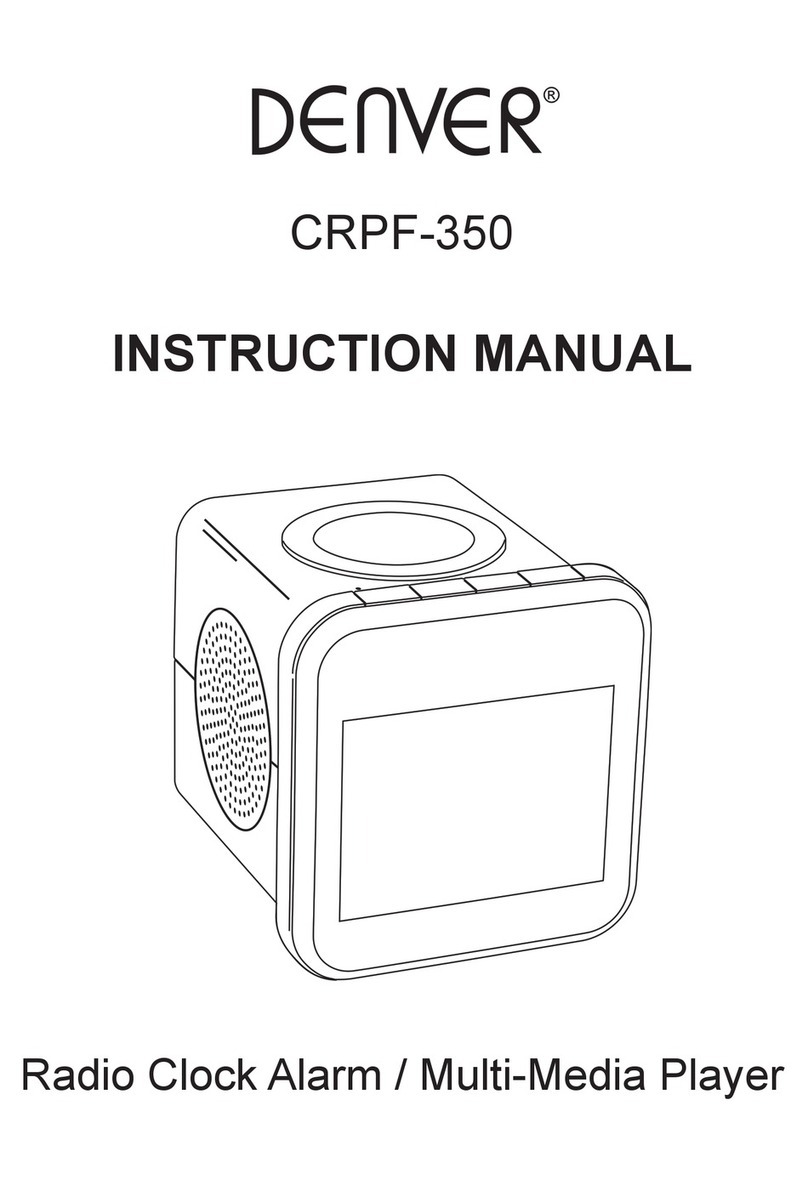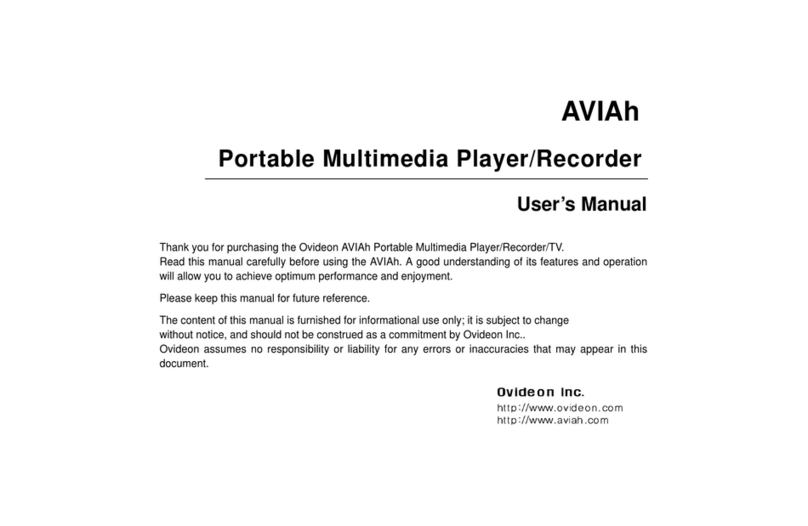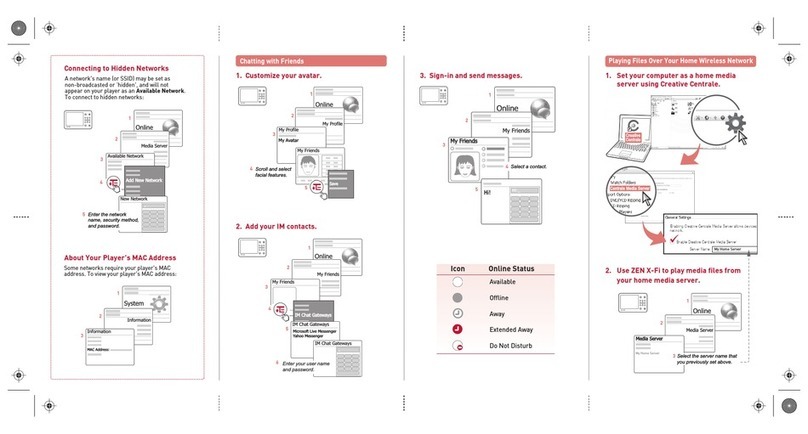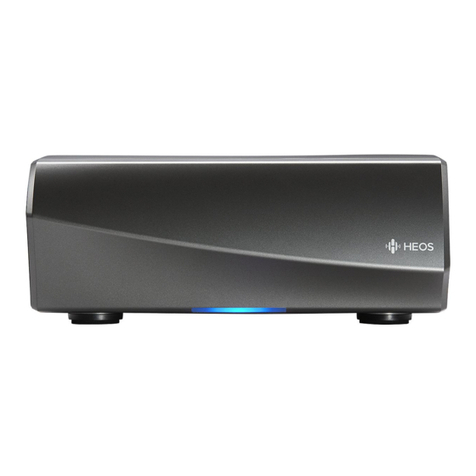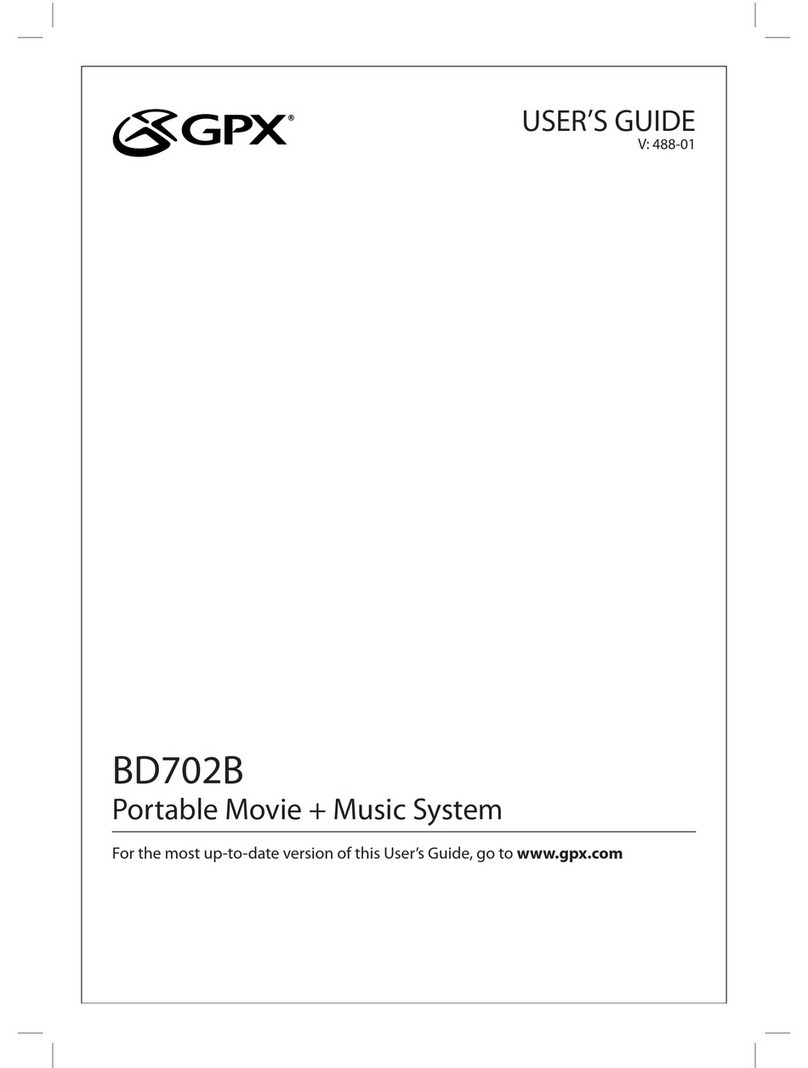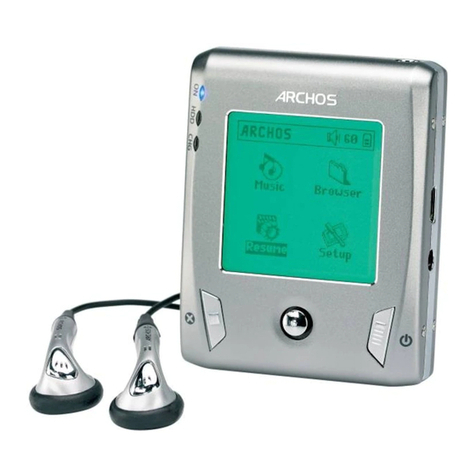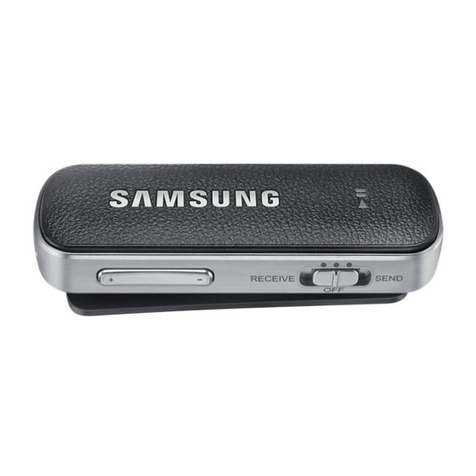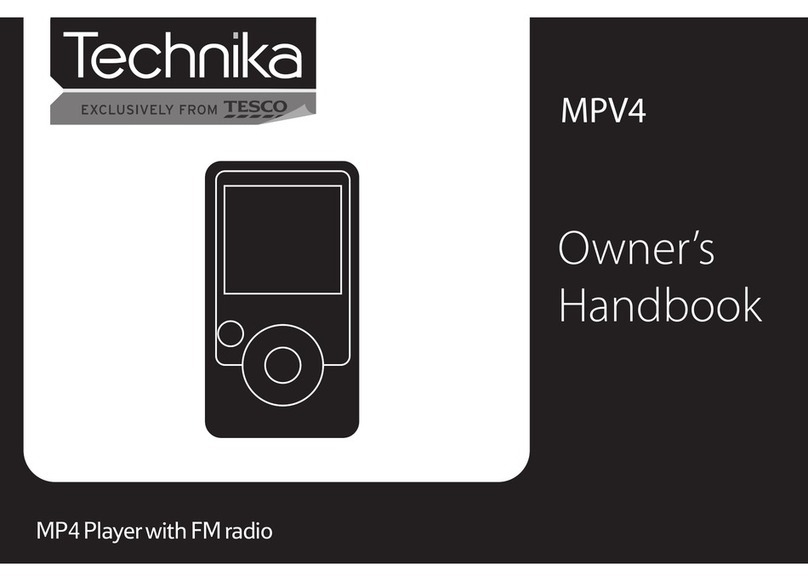DSX-M50BT
7
A TOYOTA
B NISSAN
Bracket
Support
Soporte
Bracket
Support
Soporte
to dashboard/center console
vers le tableau de bord/la console centrale
al salpicadero o consola central
ʗ
ʗ
Existing parts supplied with your car
Pièces existantes fournies avec la voiture
Piezas existentes suministradas con su automóvil
size
5 × max. 8 mm
(7/32 × max. 5/16 in)
dimension
5 × max. 8 mm
(7/32 × 5/16 po max.)
tamaño
5 × 8 mm máx.
size
5 × max. 8 mm
(7/32 × max. 5/16 in)
dimension
5 × max. 8 mm
(7/32 × 5/16 po max.)
tamaño
5 × 8 mm máx.
Bracket
Support
Soporte
Bracket
Support
Soporte
to dashboard/center console
vers le tableau de bord/la console centrale
al salpicadero o consola central
ʗ
ʗ
Existing parts supplied with your car
Pièces existantes fournies avec la voiture
Piezas existentes suministradas con su automóvil
size
5 × max. 8 mm
(7/32 × max. 5/16 in)
dimension
5 × max. 8 mm
(7/32 × 5/16 po max.)
tamaño
5 × 8 mm máx.
size
5 × max. 8 mm
(7/32 × max. 5/16 in)
dimension
5 × max. 8 mm
(7/32 × 5/16 po max.)
tamaño
5 × 8 mm máx.
A
B
q
Fuse (10 A)
Fusible (10 A)
Fusible (10 A)
OFF
1
2
ʖ
q
qq
ʕ
ʓ
Face the hook inwards.
Tournez le crochet vers
l’intérieur.
Gire el gancho hacia la parte
interior
Claws
Griffes
Uñas
2
1Unit: mm (in)
Unité : mm (po)
Unidad: mm
ʓ
Catch
Loquet
Enganche
182 (7 1/4)
53 (2 1/8)
ʖ
ʓ
Console
Console
Consola
3
Forma de extraer e instalar el
panel frontal ( )
Antes de instalar la unidad, extraiga el panel
frontal.
Ǻ-A Para extraerlo
Antes de extraer el panel frontal, asegúrese de
mantener presionado OFF. Presione y luego
extráigalo hacia usted.
Ǻ-B Para instalarlo
Coloque la parte ʭdel panel frontal en la parte ʮde
la unidad, como se muestra en la ilustración, y
después presione la parte izquierda hasta que encaje.
Advertencia: si el encendido del
barco no dispone de una posición
ACC
Asegúrese de ajustar la función de desconexión
automática. Para obtener más información, consulte el
manual de instrucciones suministrado.
La unidad se apagará completa y automáticamente en
el tiempo establecido después de que se desconecte
la unidad, lo que evita que se desgaste la batería.
Si no ha ajustado la función de desconexión
automática, mantenga presionado OFF cada vez que
apague el interruptor de encendido, hasta que la
pantalla desaparezca.
Sustitución del fusible ( )
Al sustituir el fusible, asegúrese de utilizar uno cuyo
amperaje coincida con el especificado en el original. Si
el fusible se funde, verifique la conexión de
alimentación y sustitúyalo. Si el fusible vuelve a
fundirse después de sustituirlo, es posible que exista
alguna falla de funcionamiento interno. En tal caso,
consulte con el distribuidor Sony más cercano.
Notas acerca de la sintonización
ˎ Para obtener información sobre cómo ajustar la
sintonización, consulte el manual de instrucciones
suministrado.
ˎ Si se reemplaza la batería del barco o se cambian las
conexiones, la configuración de la sintonización se
borrará.
English
Precautions
ˎ Choose the installation location carefully so that the
unit will not interfere with normal boating or car
driving operations.
ˎ Avoid installing the unit in areas subject to dust, dirt,
excessive vibration, or high temperatures, such as in
direct sunlight or near heater ducts.
ˎ Select carefully the mounting location to avoid
internal damage by water entering the unit. Areas
subject to water splashes should be avoided. The
Waterproof Car Stereo Cover (not supplied) is
recommended.
ˎ Use only the supplied mounting hardware for a safe
and secure installation.
Mounting angle adjustment
Adjust the mounting angle to less than 45°.
Removing the protection collar
and the bracket ( )
Before installing the unit, remove the protection
collar ʖand the bracket ʓfrom the unit.
1 Remove the protection collar ʖ.
Pinch both edges of the protection collar ʖ, then
pull it out.
2 Remove the bracket ʓ.
ɞInsert both release keys ʕtogether between
the unit and the bracket ʓuntil they click.
ɟPull down the bracket ʓ, then pull up the unit
to separate.
Mounting example ( )
Installation in the cutout hole on boat
Notes
ˎ Before installing, make sure that the catches on both sides of the
bracket ʓare bent inwards 2 mm (3/32 in). If the catches are straight
or bent outwards, the unit will not be installed securely and may
spring out (Ǹ-1).
ˎ Bend these claws outward for a tight fit, if necessary (Ǹ-2).
ˎ Make sure that the 4 catches on the protection collar ʖare
properly engaged in the slots of the unit (Ǹ-3).
Mounting the unit in a Japanese
car ( )
You may not be able to install this unit in some makes
of Japanese cars. In such a case, consult your Sony
dealer.
Note
To prevent malfunction, install only with the supplied screws ʗ.
How to detach and attach the
front panel ( )
Before installing the unit, detach the front panel.
Ǻ-A To detach
Before detaching the front panel, be sure to press and
hold OFF. Press and pull it off towards you.
Ǻ-B To attach
Engage part ʭof the front panel with part ʮof the
unit, as illustrated, and push the left side into position
until it clicks.
Warning if your boat’s ignition
has no ACC position
Be sure to set the Auto Off function. For details, see
the supplied Operating Instructions.
The unit will shut off completely and automatically in
the set time after the unit is turned off, which prevents
battery drain.
If you do not set the Auto Off function, press and hold
OFF until the display disappears each time you turn
the ignition off.
Fuse replacement ( )
When replacing the fuse, be sure to use one matching
the amperage rating stated on the original fuse. If the
fuse blows, check the power connection and replace
the fuse. If the fuse blows again after replacement,
there may be an internal malfunction. In such a case,
consult your nearest Sony dealer.
Notes on the tuning step
ˎ For how to set the tuning step, see the supplied
Operating Instructions.
ˎ If replacing the boat battery or changing the
connections, the tuning step setting will be erased.
Français
Précautions
ˎ Choisissez soigneusement l’emplacement
d’installation pour que l’appareil ne gêne pas la
conduite du bateau ou de la voiture.
ˎ Évitez d’installer l’appareil dans un endroit exposé à
la poussière, à la saleté, à des vibrations excessives
ou à des températures élevées comme en plein
soleil ou à proximité de conduits de chauffage.
ˎ Sélectionnez soigneusement l’emplacement
d’installation afin d’éviter que l’eau ne pénètre à
l’intérieur de l’appareil et n’entraîne des problèmes
de fonctionnement. Évitez les zones sujettes aux
projections d’eau. L’utilisation de la housse
imperméable pour chaîne stéréo de voiture (non
fournie) est recommandée.
ˎ Pour garantir un montage sûr, n’utilisez que le
matériel fourni.
Réglage de l’angle de montage
Réglez l’inclinaison à un angle inférieur à 45°.
Retrait du tour de protection et
du support ( )
Avant d’installer l’appareil, retirez le tour de
protection ʖet le support ʓde l’appareil.
1 Retirez le tour de protection ʖ.
Pincez les deux bords du tour de protection ʖ, puis
sortez-le.
2 Retirez le support ʓ.
ɞInsérez les clés de déblocage ʕen même
temps entre l’appareil et le support ʓjusqu’au
déclic.
ɟTirez le support ʓvers le bas, puis tirez sur
l’appareil vers le haut pour les séparer.
Exemple de montage ( )
Installation dans l’orifice prédécoupé sur le bateau
Remarques
ˎ Avant l’installation, assurez-vous que les loquets des deux côtés du
support ʓsont bien pliés de 2 mm (3/32 po) vers l’intérieur. Si les
loquets sont droits ou pliés vers l’extérieur, l’appareil ne peut pas
être fixé solidement et peut se détacher (Ǹ-1).
ˎ Si nécessaire, pliez ces griffes vers l’extérieur pour assurer une prise
correcte (Ǹ-2).
ˎ Assurez-vous que les 4 loquets situés sur le tour de protection ʖ
sont correctement engagés dans les fentes de l’appareil (Ǹ-3).
Montage de l’appareil dans une
voiture japonaise ( )
Cet appareil ne peut pas être installé dans certaines
voitures japonaises. Consultez, dans ce cas, votre
détaillant Sony.
Remarque
Pour éviter tout problème de fonctionnement,utilisez uniquement
les vis ʗfournies pour le montage.
Retrait et fixation de la façade
( )
Avant d’installer l’appareil, retirez la façade.
Ǻ-A Pour la retirer
Avant de retirer la façade, n’oubliez pas de maintenir
enfoncée la touche OFF. Appuyez ensuite sur , puis
faites glisser la façade vers vous.
Ǻ-B Pour la fixer
Engagez la partie ʭde la façade dans la partie ʮde
l’appareil, comme illustré, puis appuyez sur le côté
gauche jusqu’au déclic indiquant que la façade est en
position.
Avertissement si le contact de
votre bateau ne comporte pas de
position ACC
Veillez à régler la fonction Auto Off. Pour obtenir
davantage d’informations, reportez-vous au mode
d’emploi fourni.
L’appareil s’éteint complètement et automatiquement
après le laps de temps choisi une fois l’appareil arrêté
afin d’éviter que la batterie ne se décharge.
Si vous ne réglez pas la fonction Auto Off, appuyez sur
la touche OFF et maintenez-la enfoncée jusqu’à ce
que l’affichage disparaisse à chaque fois que vous
coupez le contact.
Remplacement du fusible ( )
Lorsque vous remplacez le fusible, veillez à utiliser un
fusible dont l’intensité, en ampères, correspond à la
valeur indiquée sur le fusible usagé. Si le fusible grille,
vérifiez le branchement de l’alimentation et remplacez
le fusible. Si le nouveau fusible grille également, il est
possible que l’appareil soit défectueux. Dans ce cas,
consultez votre détaillant Sony le plus proche.
Remarque sur l’intervalle de
syntonisation
ˎ Pour savoir comment régler l’intervalle de
syntonisation, consultez le mode d’emploi fourni.
ˎ Si vous remplacez la batterie du bateau ou modifiez
les raccordements, le réglage de l’intervalle de
syntonisation sera effacé.
Español
Precauciones
ˎ Elija cuidadosamente el lugar de montaje de forma
que la unidad no interfiera con las funciones
normales de conducción del automóvil o del barco.
ˎ Evite instalar la unidad donde pueda quedar
expuesta a polvo, suciedad, vibraciones excesivas o
altas temperaturas, por ejemplo, a la luz solar directa
o cerca de conductos de calefacción.
ˎ Seleccione cuidadosamente el lugar de montaje
para evitar que el agua provoque daños internos.
Deben evitarse las zonas expuestas a salpicaduras
de agua. Se recomienda utilizar la cubierta resistente
al agua para el reproductor estéreo para
automóviles (no suministrada).
ˎ Para realizar una instalación segura y firme, utilice
solamente elementos de instalación suministrados.
Ajuste del ángulo de montaje
Ajuste el ángulo de montaje a menos de 45°.
Extracción del marco de
protección y del soporte ( )
Antes de instalar la unidad, retire el marco de
protección ʖy el soporte ʓde la misma.
1 Retire el marco de protección ʖ.
Apriete ambos bordes del marco de protección ʖy,
a continuación, tire de él hacia fuera.
2 Retire el soporte ʓ.
ɞInserte ambas llaves de liberación ʕentre la
unidad y el soporte ʓhasta que encajen.
ɟPresione el soporte ʓy, a continuación, levante
la unidad para separar ambos elementos.
Ejemplo de montaje ( )
Instalación en el orificio de corte del barco
Notas
ˎ Antes de instalar la unidad, compruebe que los enganches de
ambos lados del soporte ʓestén doblados hacia adentro 2 mm. Si
no lo están o están doblados hacia afuera, la unidad no se instalará
correctamente y puede saltar (Ǹ-1).
ˎ Si es necesario, doble las uñas hacia fuera para que encaje
firmemente (Ǹ-2).
ˎ Compruebe que los 4 enganches del marco de protección ʖestén
bien fijados en las ranuras de la unidad (Ǹ-3).
Montaje de la unidad en un
automóvil japonés ( )
Es posible que no pueda instalar esta unidad en
algunos automóviles japoneses. En tal caso, consulte
a su distribuidor Sony.
Nota
Para evitar que se produzcan fallas de funcionamiento, realice la
instalación solamente con los tornillos suministrados ʗ.


